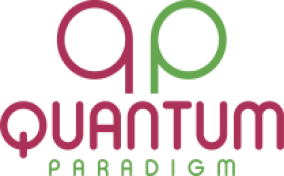Nurturing Loyalty Among The Gen Z Workforce
Introduction:
In the rapidly evolving domain of contemporary business, the emerging workforce stands out for their propensity to embrace change and pursue fresh opportunities. This discourse delves into a set of strategic initiatives tailored to engage and retain this dynamic cohort, even amidst their inclination to transition roles relatively frequently.
Strategic Transparency and Communication:
Establish a culture of open dialogue, ensuring employees are well-informed about organisational objectives, challenges, and successes.
Leverage internal communication platforms and regular town hall meetings to share insights, fostering a sense of involvement.
Example: Regular video updates from the leadership team discussing strategic decisions and the reasoning behind them.
Example: Bi-monthly webinars featuring tech leaders outlining key projects and their relevance to the industry.
Importance of Open Communication in the IT Landscape
Building Trust and Engagement through Transparent Communication
Addressing Rumours and Misinformation with Timely Updates
Utilising Internal Communication Platforms for Tech Insights:
Implementing Intranet Portals for Sharing Technological Progress
Leveraging Team Messaging Apps for Quick Tech Updates
Tech Briefings: Sharing Technological Goals and Milestones:
Regular Company-wide Meetings to Share Technological Roadmaps
Quarterly Tech Briefings by Department Heads to Align Teams
Engaging IT Workforce Through Dialogue:
Encouraging Two-Way Communication Channels for Feedback
Hosting Open Q&A Sessions with Senior Tech Leadership
Meritocratic Recognition and Career Advancement:
Unveil a merit-based recognition framework that underscores exceptional technical contributions, fostering a competitive yet collaborative ethos.
Engineers tailored career pathways, spotlighting growth avenues aligned with individual aspirations within the tech sphere.
Example: A quarterly "Innovator's Honor" award, recognizing those who've brought inventive solutions to complex technical issues.
Example: A "Rising Stars" initiative featuring quarterly awards for outstanding performance and potential.
Recognizing Technical Excellence: The Merit-Based Approach:
Instituting a Quarterly "Tech Champion" Award for Outstanding Contributions
Showcasing Successful Projects and Tech Innovations
Fostering Healthy Competition and Collaborative Spirit:
Gamifying Tech Challenges to Promote Friendly Competition
Encouraging Cross-Departmental Hackathons to Foster Collaboration
Crafting Personalized Tech Career Pathways:
Developing a Career Growth Plan for Each IT Employee
Aligning Career Aspirations with Available Technical Roles
Inspiring Tech Innovators: The "Innovator's Honor" Initiative:
Quarterly Recognition for Innovative Solutions to Tech Challenges
Showcasing Innovators' Achievements in Company-wide Communications
Continual Learning and Skill Enhancement:
Curate an evergreen repository of self-guided learning resources, empowering employees to assimilate new skills and stay attuned to the latest tech trends.
Launch mentorship tracks connecting seasoned IT experts with those seeking to fine-tune their expertise.
Example: A dynamic virtual portal offering courses on everything from coding to cybersecurity to ensure professional evolution.
Example: A digital learning hub offering curated content on subjects ranging from leadership to emerging technologies.
Ever-Evolving IT Landscape and Lifelong Learning:
Discussing the Rapid Changes in Technology and the Need for Learning
Encouraging IT Professionals to Embrace Continuous Learning Mindset
Empowering IT Professionals Through Self-Guided Learning:
Curating an Online Repository of Technical Learning Resources
Providing Access to Online Courses and Tutorials on Emerging Tech
The Role of Mentoring in Nurturing Technical Expertise:
Pairing Junior IT Professionals with Experienced Mentors
Encouraging Regular One-on-One Mentor-Mentee Discussions
A Tech Learning Hub: Diverse Course Offerings for Continuous Growth:
Offering Internal Workshops on Topics like AI, Cloud Computing, etc.
Partnering with External Platforms for Access to Specialized Training
Agile Work Arrangements and Work-Life Integration:
Champion a pliable work arrangement that accommodates remote tech work and adjustable schedules, prioritising productivity over stringent clock-ins.
Implement technology-assisted wellness programs catering to holistic well-being, both digitally and mentally.
Example: A bi-weekly "Remote Innovation Day" empowering tech staff to work from their preferred locations.
Example: A wellness app providing resources for mindfulness, fitness routines, and stress management.
Adapting to the Tech Workstyle: Agile Arrangements:
Highlighting the Need for Flexibility in the Tech Industry
Explaining How Agile Work Supports Rapid Tech Development
Remote Tech Work: Enhancing Productivity and Flexibility:
Sharing Success Stories of Remote Tech Teams Delivering Results
Discussing the Tools and Practices for Effective Remote Collaboration
Enabling Work-Life Balance Through Technology-Assisted Wellness:
Presenting Tech Solutions for Tracking Health and Well-being
Discussing Apps and Platforms for Mental Health Support
Reimagining the Office: The Power of "Remote Innovation Day":
Explaining the Concept of Dedicated Days for Remote Innovation
Sharing Benefits of Allowing IT Teams to Work from Different Locations
Competitive Compensation and Comprehensive Benefits:
Benchmark salaries to industry standards, offering competitive remuneration that reflects their value in the market.
Provide a comprehensive benefits package encompassing healthcare, retirement plans, and professional development allowances.
Example: An annual "Total Rewards Fair" where employees can explore and understand the full spectrum of benefits available to them.
Example: An annual "Tech Compensation Symposium" laying out the complete spectrum of remuneration and benefits within the IT domain.
Ensuring Fair Compensation: Aligning IT Salaries with Industry Standards:
Discussing the Company's Commitment to Competitive Compensation
Explaining How Compensation Reflects IT Professionals' Value in the Market
Beyond Paychecks: Comprehensive Benefits Catering to IT Professionals:
Detailing Healthcare, Retirement, and Professional Development Benefits
Highlighting Flexibility in Benefits to Cater to Varied Needs
Investing in Tech's Future: Professional Development Allowances:
Sharing the Company's Investment in Ongoing Tech Learning
Discussing Reimbursement Programs for IT-Related Courses
The "Tech Compensation Symposium": An Insightful Overview:
Describing the Symposium as an Annual Overview of Compensation and Benefits
Explaining How the Symposium Helps IT Professionals Understand Their Package
Decoding Post-Millennial Minds in Traditional Workspaces:
The world is changing, and so are our workplaces. The rise of the post-millennial generation, those born roughly between the mid-1990s and early 2010s, brought new perspectives and approaches to the traditional work environment. Take a closer look at how young minds shape the way we work and interact within the confines of the workplace we're all familiar with.
One of the first things that's striking about the post-millennials is the natural knack for technology. They're super comfortable with all things digital, from coding to Snapchat. This digital fluency isn't just for fun – it's a real asset in the workplace. When it comes to handling tasks that involve technology, they're like wizards. Need to whip up a quick presentation or figure out that finicky software? They're on it. Companies can tap into this by giving them tech-related challenges or letting them play a role in adopting new tools.
Moreover, it's not all about screens and gadgets. These young adults excel at teamwork. They've grown up with social media and online communities, so they know the power of collaboration and effective communication. Think about it – they're used to sharing their thoughts with the world with just a few clicks. This means they're pretty comfortable bouncing ideas around with their coworkers. They're not afraid to speak up, and that's great news for any workplace. So, team projects? They're all in. Brainstorming sessions? They're ready to roll. Organisations can create spaces that encourage this kind of open dialogue, where everyone's voice matters.Where issues of mismanagement and change in the compensation structure can be discussed and negotiated like never before.
Learning is also important for these young minds. They're like magnets, researching and retaining knowledge from everywhere. With the internet at their fingertips, they're used to finding answers to their questions in seconds. This means they're hungry for fresh information. In a traditional workspace, this can be a game-changer. Companies can organise workshops or provide online courses to feed their appetite for knowledge. And you know what? They're not just looking for a job – they're looking for a chance to grow and evolve.
Now, let's talk about how they see work. It's not just about punching in and out for them or getting that paycheck. They value their personal lives just as much as their professional ones. Flexibility is key. They want jobs that don't tie them down to a desk from 9 to 5. Remote work? That's right up their alley. They're all about that work-life balance. If they can take meetings while making breakfast or tweak a presentation from a coffee shop, they're all for it. Companies can embrace this by offering flexible work hours or remote work options. It's a win-win situation where they can be productive while still having time for the things they love outside of work.
When it comes to choosing where they want to work, they're looking for more than just a paycheck. They want to be part of something meaningful. If a company is making a positive impact on the world, that's a big plus. They're not just after a job title – they want a purpose. Traditional workplaces can show how their values align with these young minds. If they're involved in community projects or support causes, that's something post-millennials can get behind. It's all about being real, honest, and making a difference.
Additionally, apart from financial compensation, the post-millennial generation places significant value on job flexibility and finding purpose in their work. However, their considerations extend beyond these factors when evaluating potential employment opportunities. Post-millennials seek roles that go beyond monetary rewards, aiming for positions that bring about positive emotions and a sense of personal fulfilment. They are drawn to workplaces where their efforts receive recognition, and their supervisors are proactive in acknowledging their accomplishments. This acknowledgment is more than just a formality; it symbolises feeling appreciated and respected. When they invest time and energy into their tasks, they seek assurance that their dedication doesn't go unnoticed.
The need for job security is paramount. They want assurance that their hard work won't be undermined, particularly if their tenure with a company is brief. This concern reflects their desire for their contributions to hold value and impact, regardless of the duration of their employment. In summary, post-millennials aspire to more than financial gain from their jobs; they desire an experience that aligns with their values and aspirations. Jobs offering flexibility, purpose, recognition, and security resonate with their holistic view of work. Recognizing and addressing these needs can attract and retain post-millennial talent, cultivating an environment where they feel valued and motivated to contribute effectively.
In conclusion, the post-millennial generation is bringing fresh air to traditional workplaces. Their tech-savviness, love for collaboration, hunger for learning, desire for flexibility, and yearning for purpose are all part of their unique mindset. By understanding these aspects, companies can create an environment where post-millennials can thrive and contribute their best. It's a chance for the old and the new to come together and create something amazing. After all, the future belongs to them, and they're ready to shape it.
Conclusion:
In conclusion, the post-millennial cohort is reshaping work dynamics through their tech-savviness, collaborative outlook, and hunger for growth. Their yearning for meaningful roles and genuine appreciation requires workplaces to adapt. By embracing these values, companies can tap into their potential, fostering innovation and cooperation. This synergy not only retains talent but also creates a thriving environment where personal and organisational success intersect harmoniously.
References:
https://www.bbc.com/worklife/article/20230405-why-gen-z-workers-are-starting-on-the-back-foot
https://www.bbc.com/worklife/article/20220613-gen-z-the-workers-who-want-it-all
https://www.deloittedigital.com/us/en/blog-list/2023/gen-z-research-report.html
https://imagine.jhu.edu/blog/2023/04/18/gen-z-in-the-workplace-how-should-companies-adapt/












